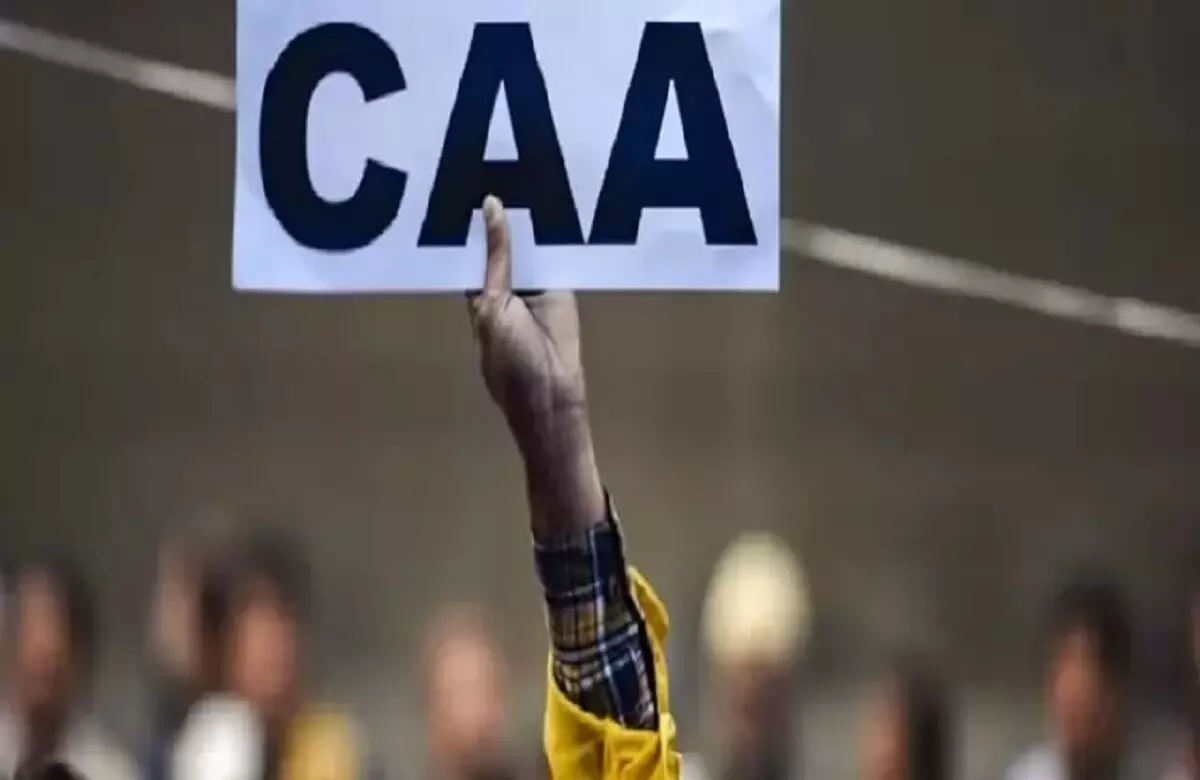Beyond the obstacles
Owing to unavoidable delays, the implementation of the contentious CAA has been on a standstill, but now, it is all set to see the light of the day

The Citizenship Amendment Act, or 'CAA' law, was widely discussed four years ago. However, the rules of this law, passed in 2019, could not be decided, preventing its implementation to date. Now, the central government can amend the rules of CAA 2019 before the Lok Sabha elections, and this law will come into effect once the rules are decided. Under the law, non-Muslims who endured torture in Pakistan, Afghanistan, and Bangladesh and came to India will be granted Indian citizenship. This includes Hindus, Sikhs, Jains, Buddhists, Parsis, and Christians. Indian citizenship will be granted only to foreign non-Muslims who arrived in India before December 31, 2014. The entire process of granting citizenship to non-Muslim foreign citizens will be conducted 'online'; an 'Online Portal' has been launched for this purpose. To apply for citizenship through this portal, the applicant must provide necessary information, such as in which year the citizen had entered India without a valid document, secondly, for how many years after entering India, where has that citizen been staying and thirdly, the applicant will have to mention the reason for leaving the country. Along with this, information about current business will also have to be given online.
Actually, the government lacks actual data on Hindus entering India from Bangladesh, as well as citizens from Pakistan and Afghanistan. Therefore, only online information will be obtained from citizens of these three countries who are eligible for Indian citizenship, and no related documents will be requested from the applicants. It is noteworthy that there was significant opposition to this law in 2019, and even now, West Bengal Chief Minister Mamata Banerjee and her party, TMC, oppose the CAA. However, the Central Government has clarified that the CAA will be implemented before the Lok Sabha elections. The Citizenship Amendment Act of 1955 provides for granting Indian citizenship, requiring a person to live in the country for at least 11 years. Nevertheless, the provisions in the Citizenship Amendment Act have been modified to grant citizenship to non-Muslims from three countries after a stay of only 5 years instead of the previous 11 years. People from other countries will still need to spend 11 years in India to be eligible for citizenship.
After information about the implementation of CAA came to light, politics has reignited in the country. The opposition claims that the BJP aims to capitalise on this during the Lok Sabha elections, leading to the alleged misleading of people by this law. In fact, according to the rules of parliamentary procedure, the rules of any law should be formulated and implemented within 6 months of the President's consent. There are primarily three major reasons for the delay in the implementation of CAA: first is 'protests,' second is the 'Corona crisis,' and third is 'vaccination.' The most significant obstacle to implementing CAA was the protests against this law. A state of confusion arose among the Muslims of the country regarding CAA, leading to protests in Shaheen Bagh, Delhi. Thousands of protesters occupied the streets. However, the demonstration ended after the government's efforts. By then, Corona cases had started increasing in the country. Meanwhile, many organisations filed a petition in the Supreme Court regarding the matter, and the hearing is still ongoing.
In fact, a lot of politics is being done on CAA by labelling it as a law that grants citizenship based on religion, despite India being a secular country. CAA is a law designed to grant citizenship to victims of discrimination in the name of religion. However, the Supreme Court questioned the appropriateness of excluding non-Muslim victims from countries like Burma and Sri Lanka from receiving citizenship. The law's foundation is based on the situation of the past 70 years, with provisions to grant citizenship to non-Muslims in countries formed on the basis of religion.
Home Minister Amit Shah clarified the confusion surrounding CAA in a statement to Parliament in 2019, stating that the CAA law is not intended to revoke citizenship but is a law to grant citizenship. However, before the law could be implemented, Corona cases surged rapidly in India, leading to a nationwide lockdown. Implementing CAA without deciding the rules became impractical. Therefore, as per the rules, the Home Ministry had to seek 'extensions' from parliamentary committees nine times in succession. This prolonged the time limit for implementing the law. Evidently, the government's priority was to first protect the citizens from Corona, hence delaying the implementation of the law. The government has now decided to consider the implementation of CAA after the completion of the vaccination process, planning to execute it before the Lok Sabha elections.
Although CAA could not be implemented in four years, it does not mean that non-Muslim foreigners have not obtained Indian citizenship. In fact, even in these four years, India has granted citizenship to people who came to India after being tortured in Pakistan, Afghanistan, and Bangladesh. Under the Citizenship Act of 1955, India has conferred Indian citizenship upon a total of 4,027 foreign nationals between 2018 and 2021. In 2018, 628 foreign nationals acquired Indian citizenship. In 2019, 987 foreigners became citizens of India. There were 639 foreigners who obtained Indian citizenship in 2020, while in 2021, the highest number of 1,773 foreigners were granted Indian citizenship. Between 2018 and 2021, a total of 8,244 foreign nationals applied for Indian citizenship. The individuals to whom India granted citizenship are all non-Muslims who were subjected to torture in Pakistan, Bangladesh, or Afghanistan and were residing in India without valid documents. Now, after four years, the government is set to implement CAA.
The writer is Assistant Professor, Mechanical Engineering Department, Kanpur Institute of Technology. Views expressed are personal



